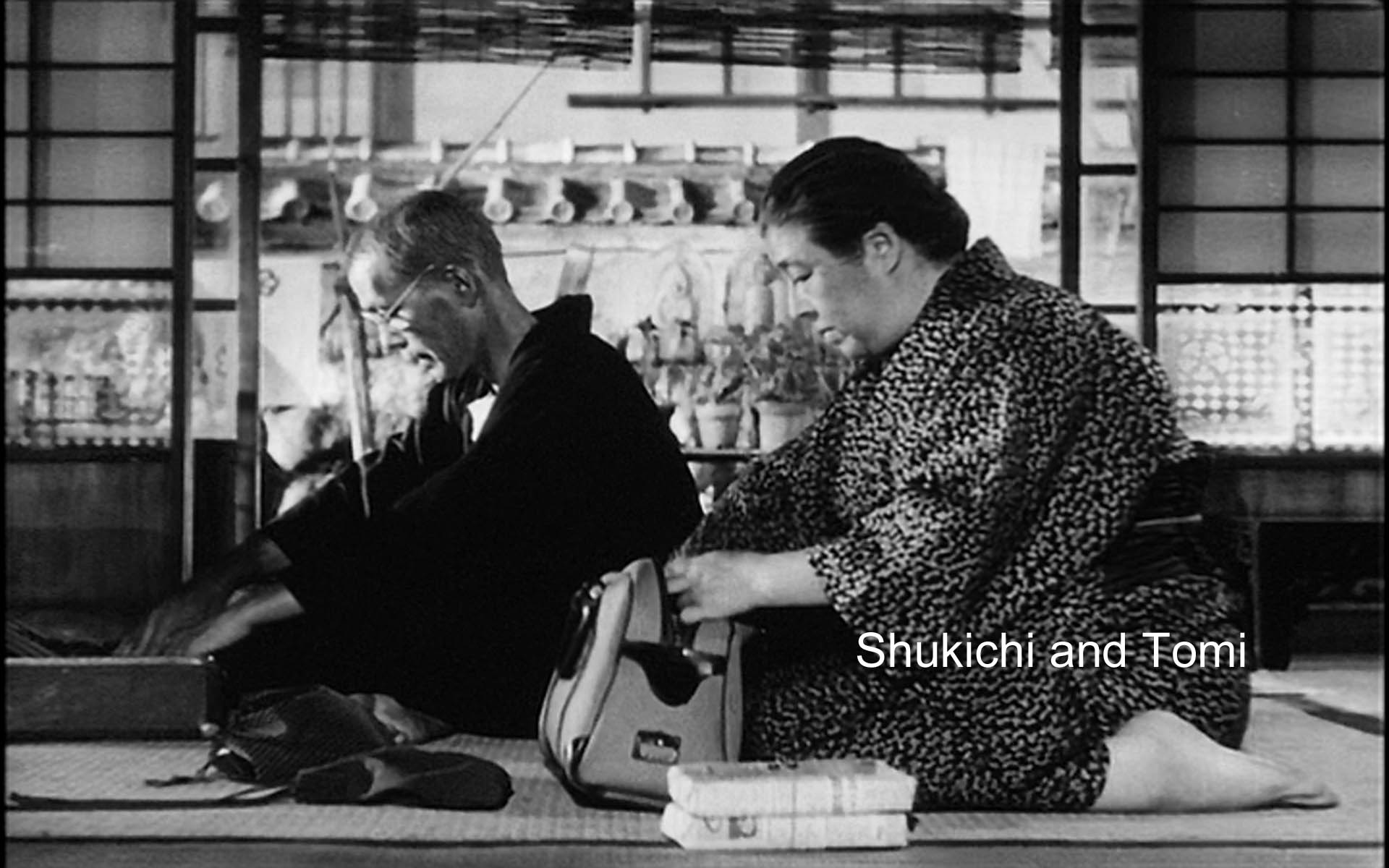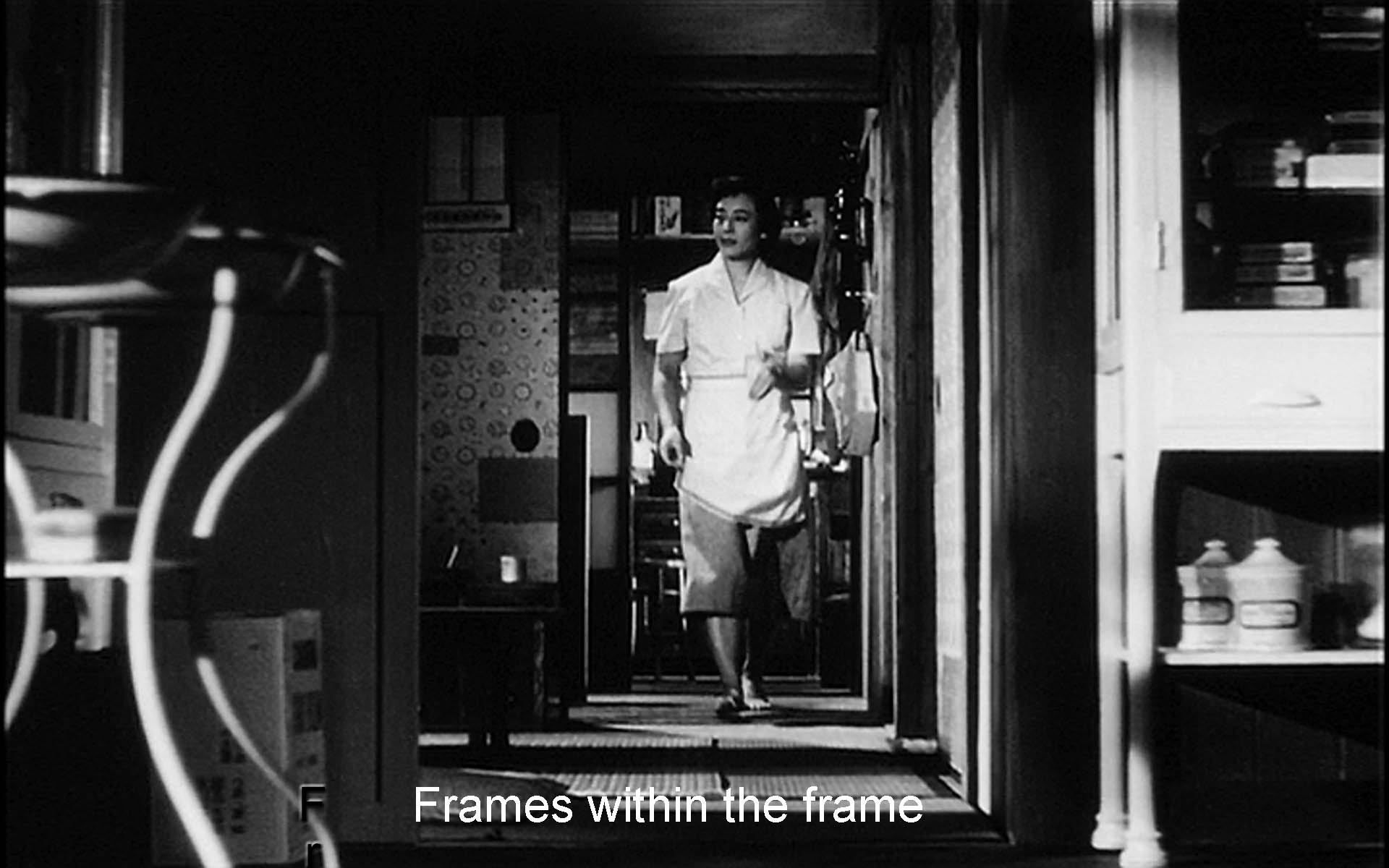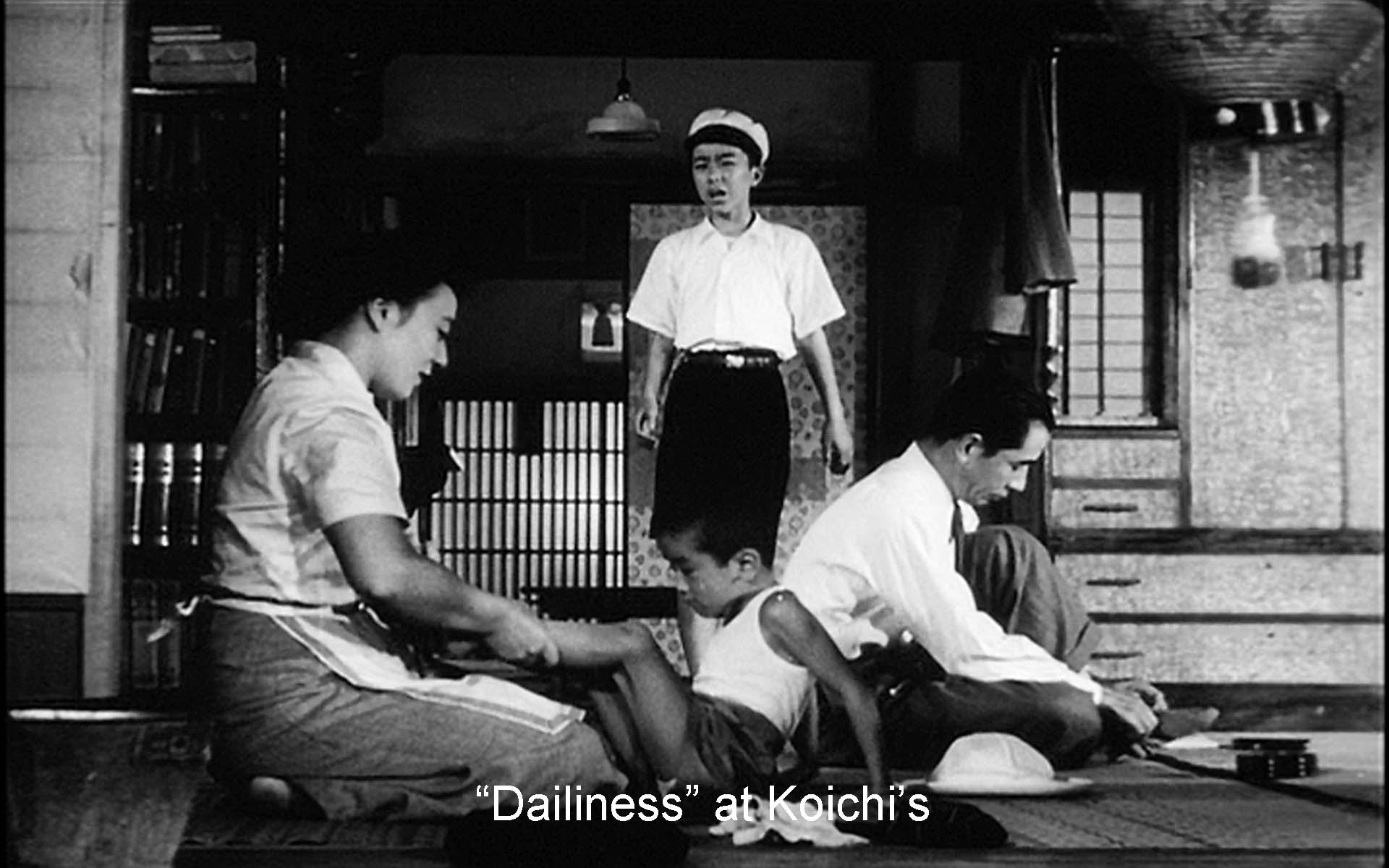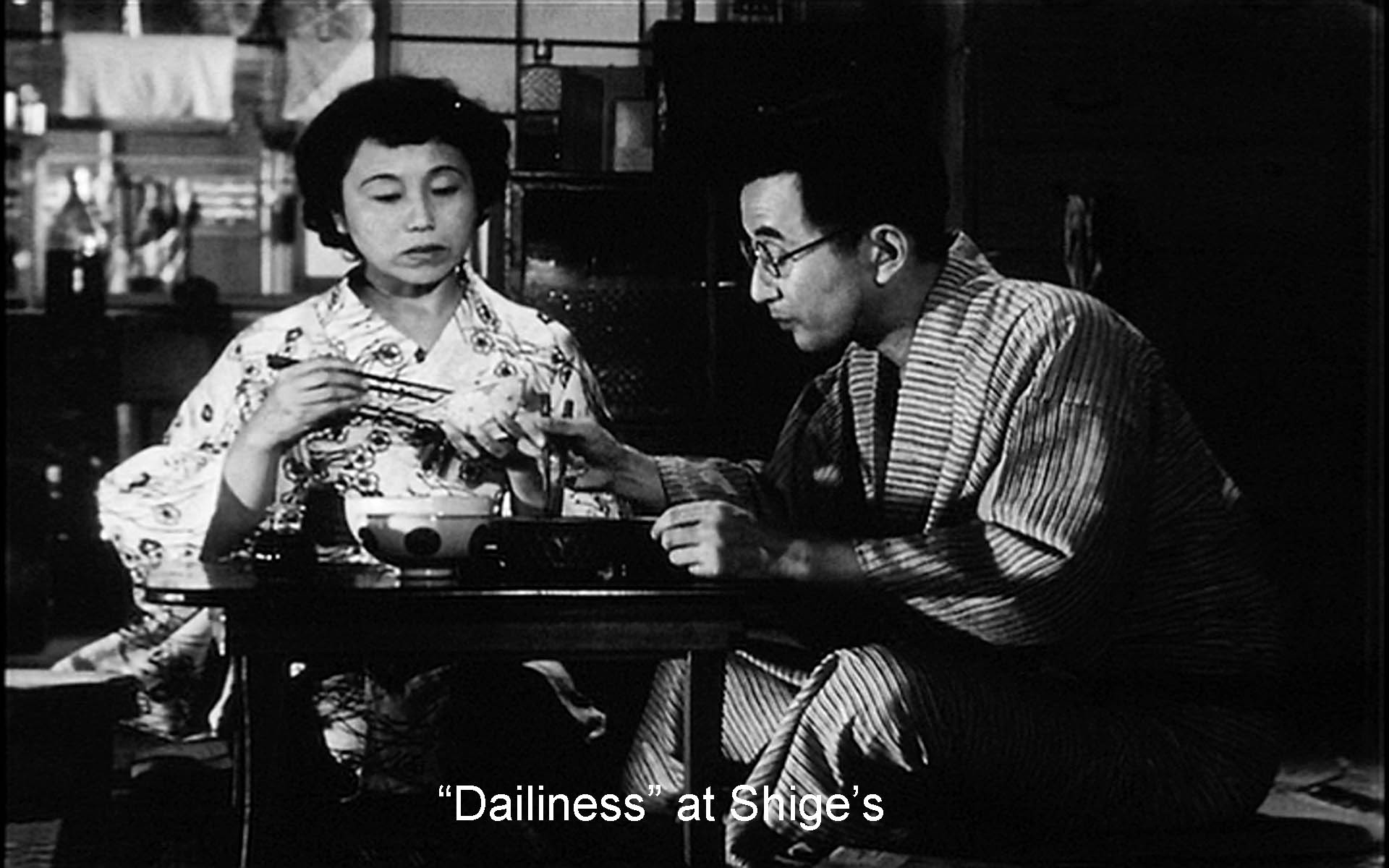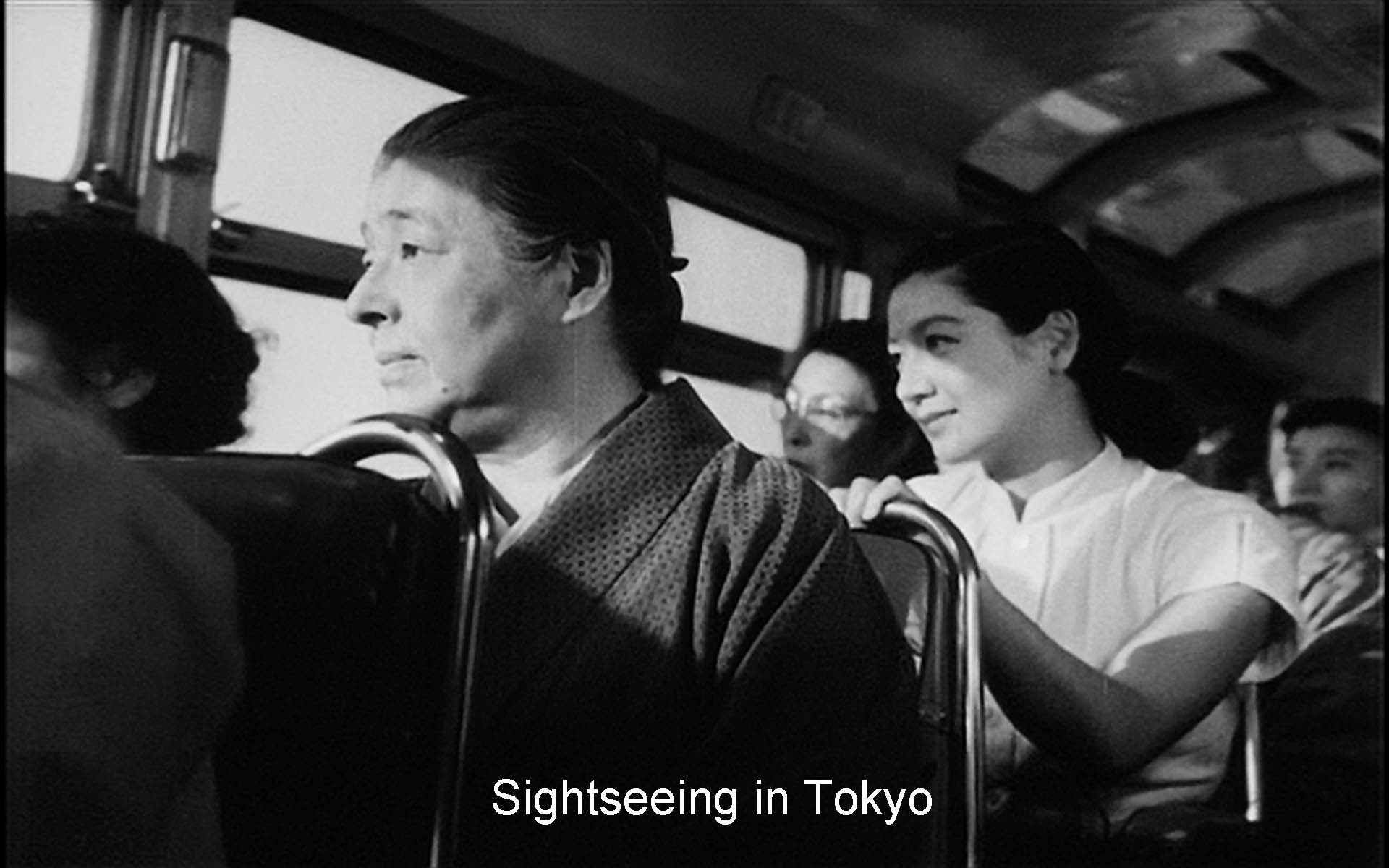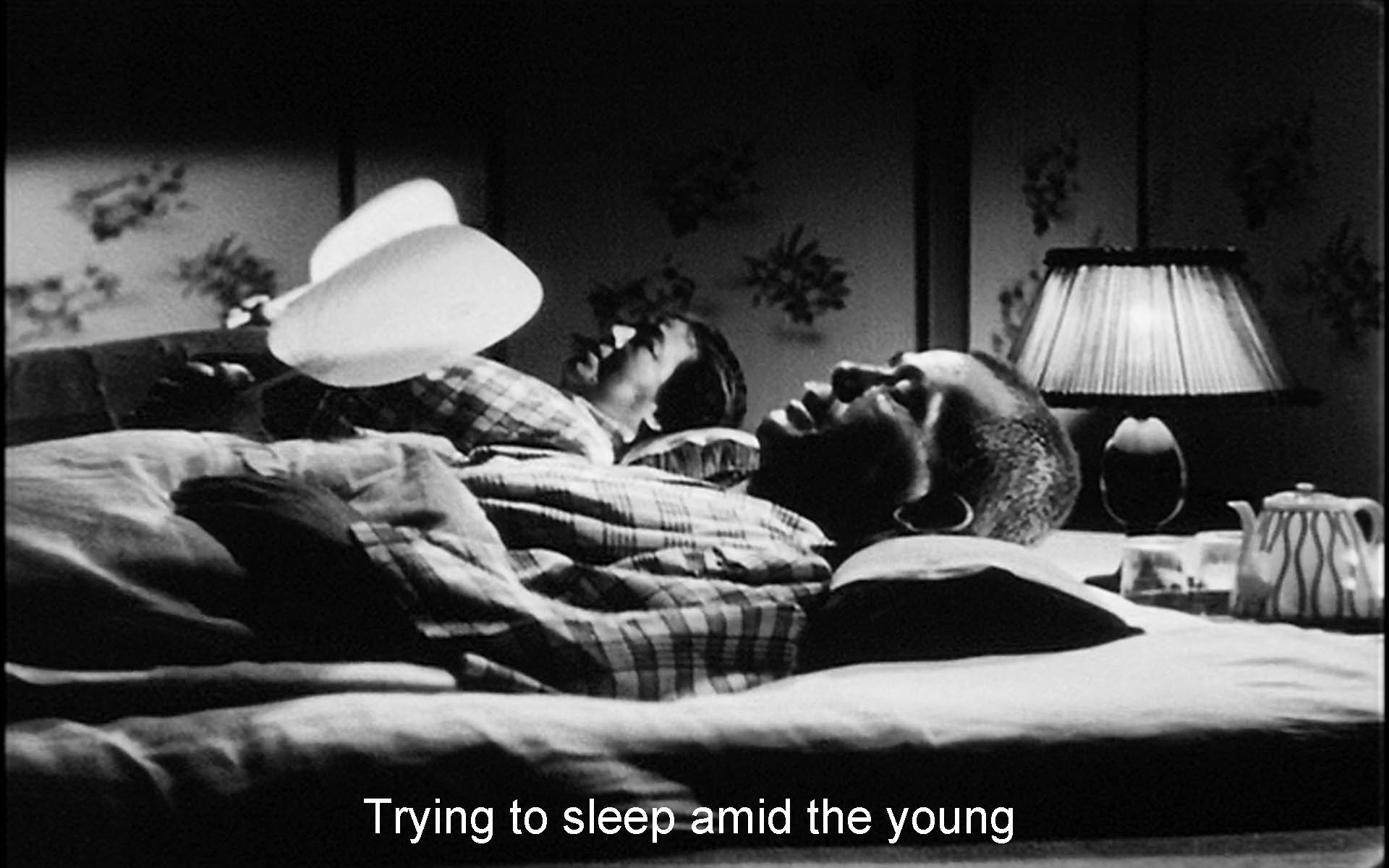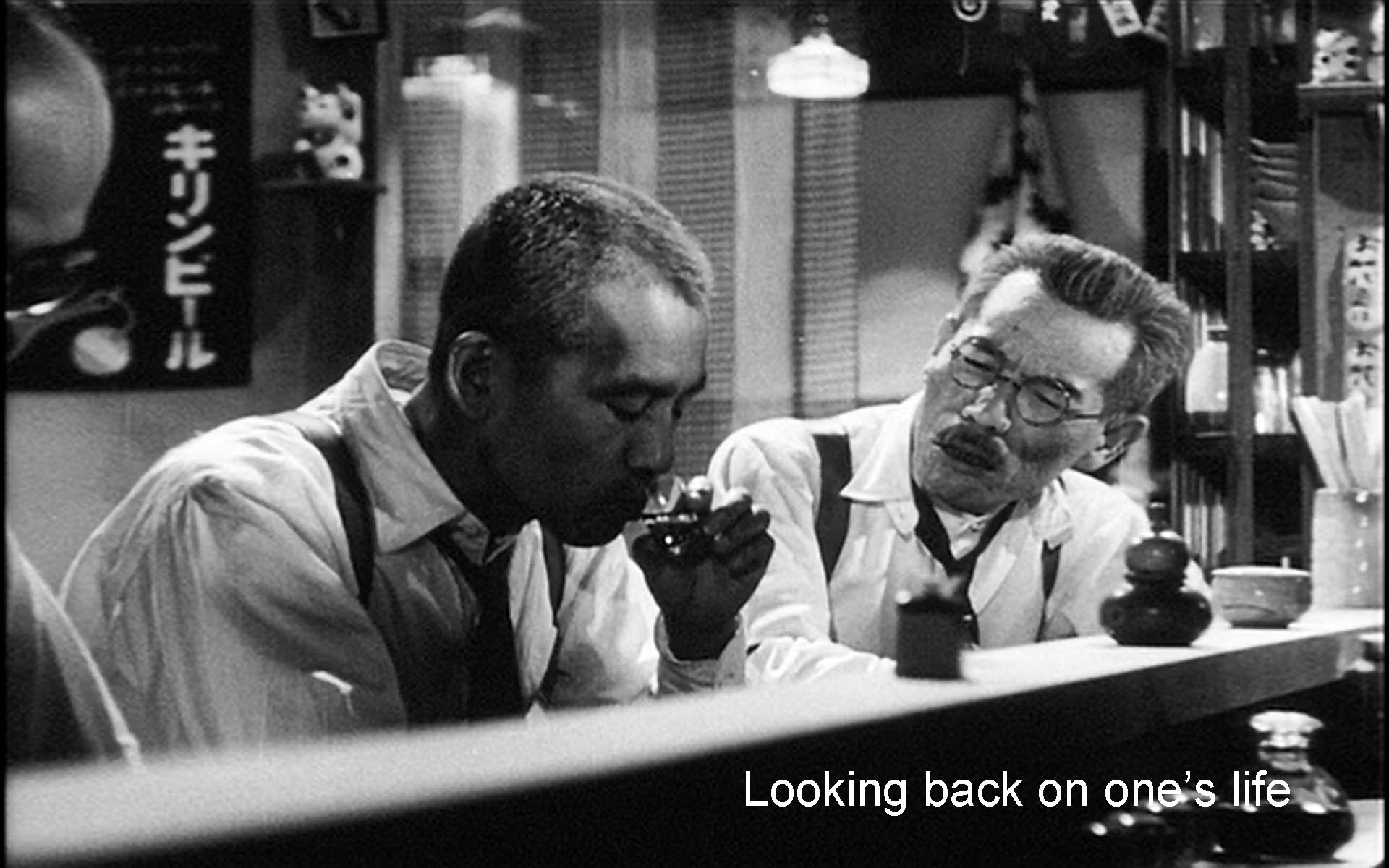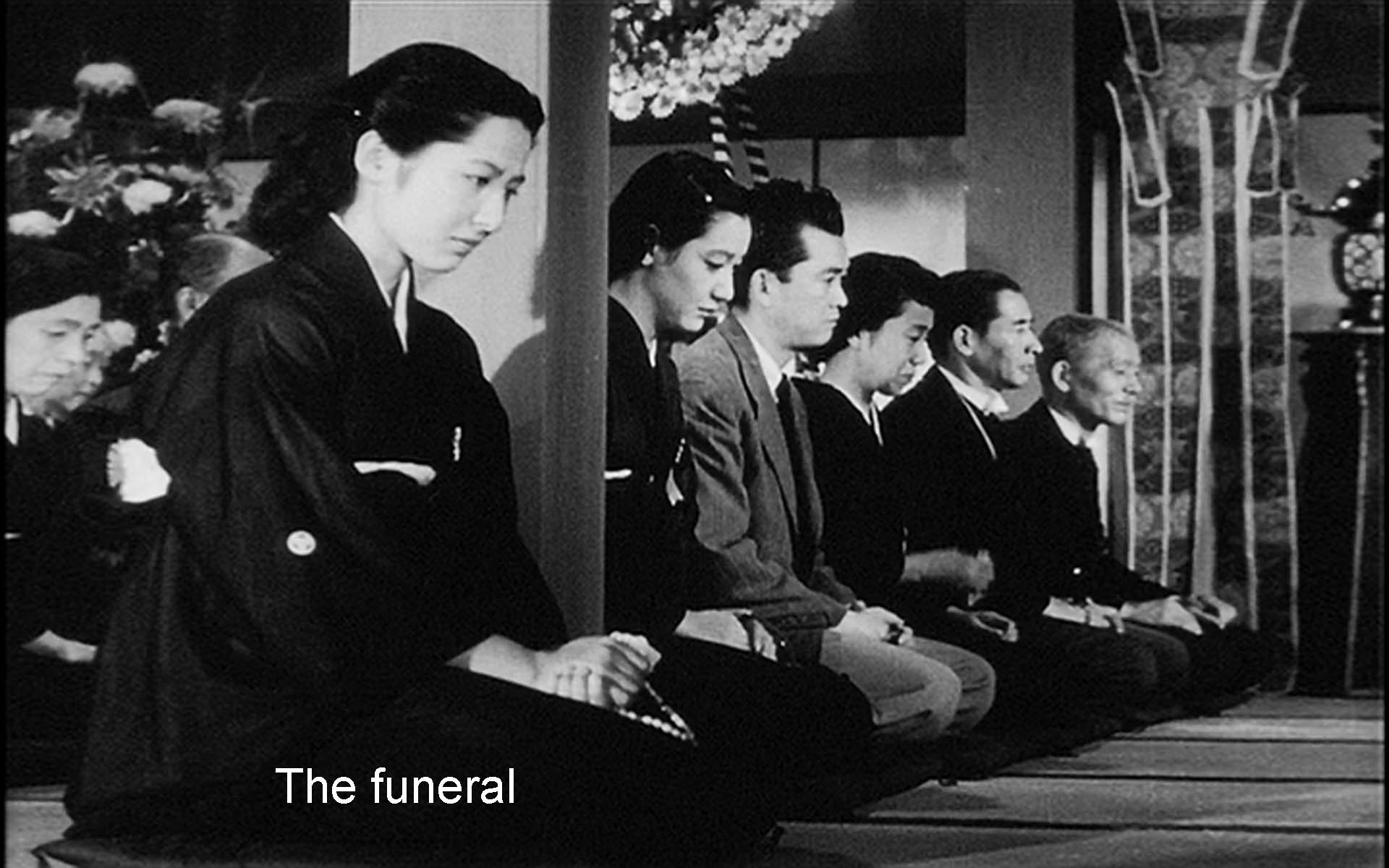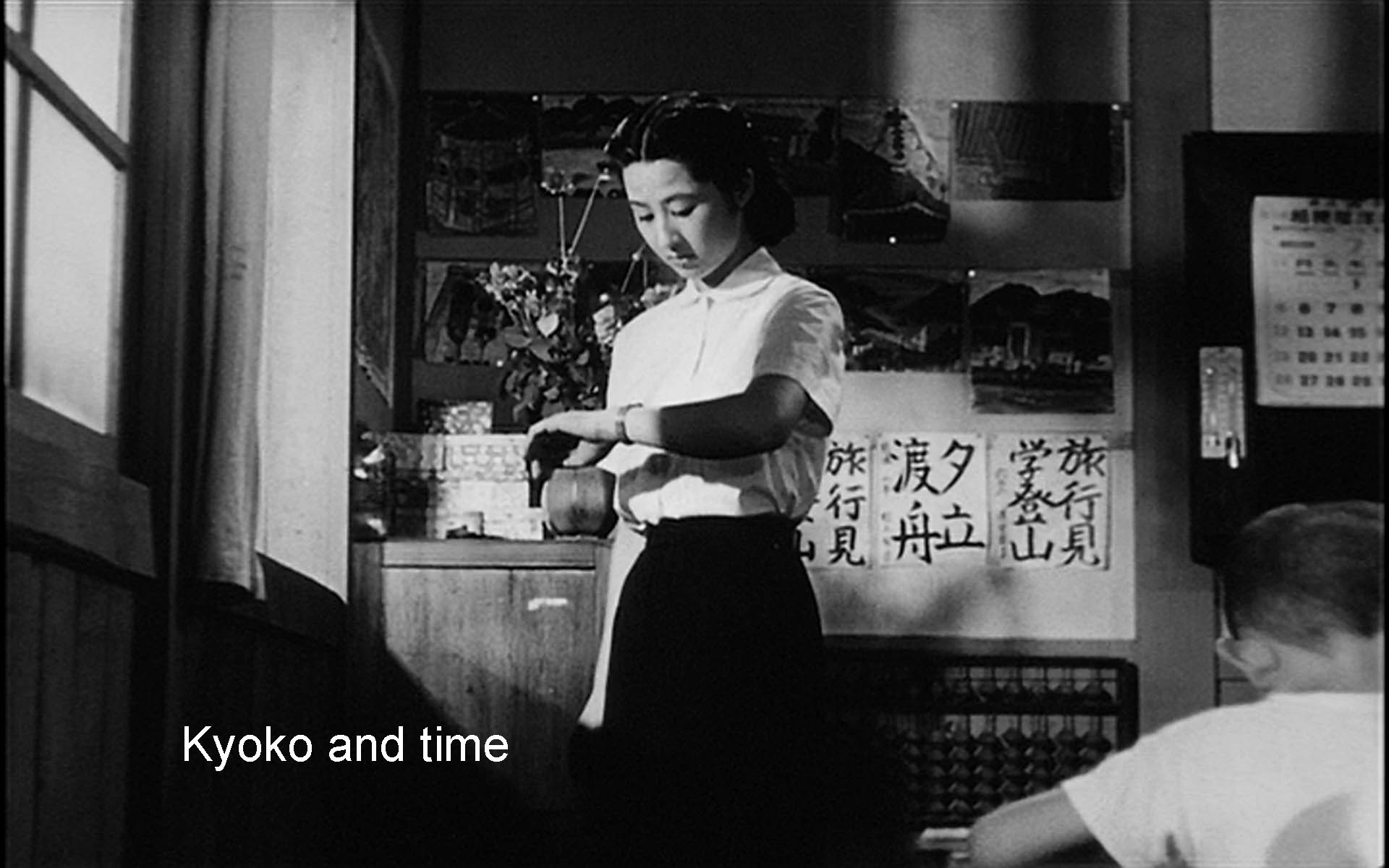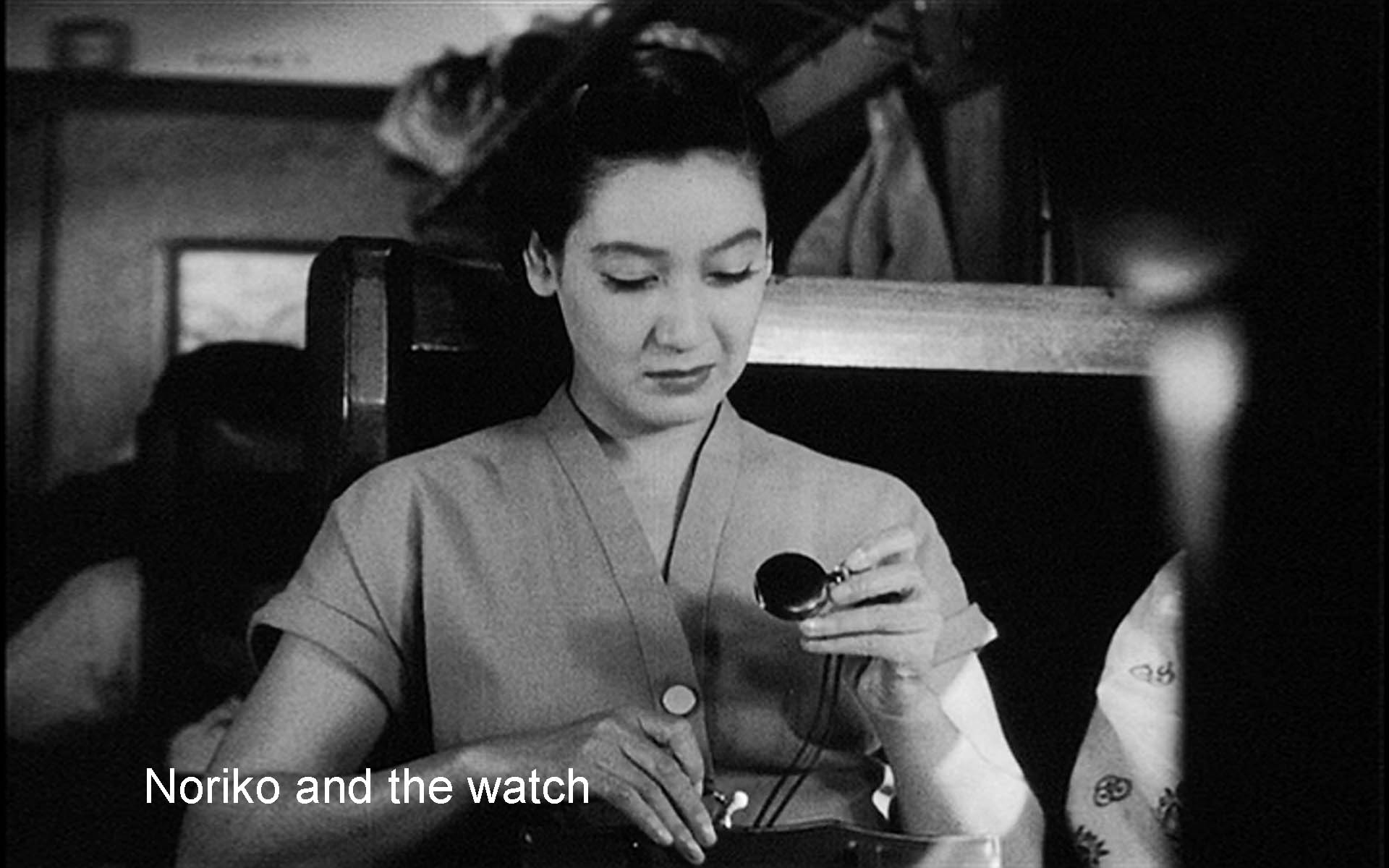Most Western critics regard this film as Ozu’s masterpiece, and I enthusiastically agree. It was also popular with Japanese moviegoers because of its picture of everyday life. Interestingly, Ozu’s long-time collaborator on scripts, Kogo Noda, had seen an American film, Leo McCarey’s Make Way for Tomorrow (1937), about children neglecting elderly parents. This film tells a similar story but with substantial differences.
As in other Ozu films, that story is simple enough. An elderly father and mother living in a distant fishing village, Onomichi, go to Tokyo to visit their children and grandchildren. The children are very busy and send their parents off to a spa instead, but that doesn’t work out. The parents set out for home. The mother gets sick on the journey and dies at home. There is a funeral.
This film, like others by Ozu, builds on the tension between traditional Japanese values, represented by life in Onomichi and a modern, westernized life in Tokyo. Always in the background is a Confucian idea, stated late in the film by the youngest son and his boss: “Be kind to your parents while they’re alive.” “No one can serve his parents beyond the grave.” Interestingly, the maxim comes out in the railroad office in Osaka, that is, between modernist Tokyo and traditional Onomichi. The location suggests its halfway application by the younger generation. The one generous person in the younger generation is a daughter-in-law, not a blood relative. Therefore she has no obligation to take care of her parents-in-law. Her generosity in doing so contrasts all the more strikingly with the shuffling and shifting of the real children.
Tokyo Story deals with the failed relations between parents and their grown-up children, caught up in an American-influenced, get-ahead mentality, symbolized by life in Tokyo. This film is, among other things, a “city film” like Woody Allen’s Manhattan or Vittorio De Sica’s Bicycle Thieves.
The sequence where Ozu follows the old father and mother on a sightseeing tour of Tokyo says it all. Ozu renders their tour in a series of conventional montage shots, very rare for this man whose camera is mostly fixed for a whole scene. It is as though he is distinguishing a “Tokyo style” from his normal filmmaking. It is as though he is saying that this big city is a big, alien, meaningless jumble. Anyone who has taken a rubberneck bus through a strange city must know the feeling.
Keep in mind, too, the Japanese theme of mono no aware (which, my reading tells me, runs through all the Japanese arts). Life is a mixed bag, and a wise person accepts that with grace and good humor. As Japan film expert Donald Richie puts it, “putting up with things and taking satisfaction in your putting up with things.” That is quite explicitly the theme of this picture (as well as other of Ozu’s). The trailer for this picture puts it this way: “As long as life goes on, relationships between parents and children will bring boundless joy and endless grief.”
It helps if you know ahead of time the names of these parents and children. They are revealed in the dialogue in Ozu’s characteristically elusive way of giving information. The names are somewhat confusing, because they occur in other Ozu films, used for different roles.
Shukichi and Tomi, the father and mother, live in Onomichi, a southern fishing village, treated as quite far from Tokyo. It is about twenty-five miles from Hiroshima (never mentioned in the film).
Koichi, the oldest son, is a doctor with a small neighborhood practice in Tokyo. He is married to Ayako, and they have two small (bratty) boys, Minoru and Isamu.
Shige, the older daughter, is a beautician and also lives in Tokyo. She too is married, to Kaneko.
Shoji, another son, was killed in World War II.
Keizo, the youngest son, lives in Osaka, a stop on the train line between Onomichi and Tokyo. Although he lives nearest the parents, he is the last to arrive for the funeral.
Kyoko, the younger sister, a schoolteacher, unmarried, lives in Onomichi with her parents.
Noriko, a daughter-in-law, the widow of Shoji, does office work for a trading company in Tokyo and lives in a markedly poorer apartment than Koichi’s or Shige’s. She is played by the actress who made so many films with Ozu, Setsuko Hara.
In its many, many references to time, Tokyo Story plays with different kinds of time. That is, we can envision time—and I think the film treats time—as cyclic, and there are cycles with different periods. On the one hand, there is what critic David Desser calls “dailiness,” the routines of daily life: children going off to school and coming back, parents going to work, housewives’ dusting, family meals, and so often with Ozu, laundry hanging on a line. I would call it daily time. It is hot in this film. Japan has a sub-tropical climate with lots of fog and rain, but it is almost always sunny in Ozu’s movies. Here it is downright hot, as in the father’s last words, “It’s going to be another hot day.” The characters are constantly fanning themselves, one of many images of a cyclic, repetitive, daily time.
The fans, however, define another kind of time, a much more rapid cycling. Ozu foregrounds the rapid putt-putt of the boats in Onomichi harbor (which we hear even when we don’t see them), a clock ticking, plucking at kimono, hammering and drilling on construction sites, the sound of crickets in the country, the chanting and drumming of monks at the funeral, and a highly symbolic moth batting its wings against a light bulb. It seems as though this kind of heartbeat time could go on forever. But, of course, it doesn’t. We get images of silence and emptiness in the moments of Tomi’s death.
Then there is clock time, seemingly objective and tied to machines, as in Keizo’s job, scheduling trains. Finally, there is one object that seems to stand outside of time, the stone lantern in the opening and closing shots. Seemingly eternal, I sense the various human times in the film as its opposite.
Such more and less permanent objects identify settings. The early shots of the stone lantern identify the setting as Onomichi, the parents’ home. A shot of the famous Osaka castle tells us that the next scenes will take place there. Shots of smokestacks and building construction tell us that we are in Tokyo, which was having a building boom at the time—part of the film’s theme of change.
Ozu finds a visual equivalent for these cycles-within-cycles in his many compositions involving a frame-within-a-frame. Windows, corridors, or shoji doors and screens create rectangular frames paralleling the film frame inside it.
But Tokyo Story has yet another kind of time, a linear progression, like a train’s, from a start to a finish, like the parents’ and children’s journeys, like a lifetime. The opening and closing scenes of schoolchildren say it: this is the story of a younger generation’s replacing an older one. There are permanent changes: the children’s having moved to Tokyo, the changes in Japanese culture, or the deaths of Shoji and Tomi. This kind of time is relentless. It grinds on whether we are aware of it or not, hence events take place whether we see them or not: Kyoko sees her parents off on their trip, they stay in Osaka while Tomi makes a partial recovery, and we don't see these key events. This is part of Ozu’s style, conveying information in ellipses, but it also suggests to me this relentless progression of time.
We get shots of construction to identify Tokyo, undergoing a boom at this time, again, permanent change. In our ordinary lives, though, we are more aware of the “dailiness,” the repetitions. Then, as we grow older, we become more aware, more painfully aware, that life’s journey does not repeat; it has a terminus. Thus, Shukichi and Tomi’s journey to Tokyo and their return to Onomichi ends with Tomi’s death.
One of Ozu’s favored images, trains, stands for this kind of progressive time. Notice how the train in the opening shots shifts from going left-to-right to going right-to-left. Trains mark change. A stone lantern—another shot in the opening—does not. Nevertheless, in this seaside village, it serves as a harbor light, marking a destination. In the most obvious start-to-finish time, Shukichi and Tomi—we see them only in traveling mode, terminus-time—move relentlessly toward disappointment in their children and Tomi’s death.
Other scenes embody this kind of progressive time. Noriko’s neighbor has a baby in the foreground, and there are many shots of schoolchildren (to say nothing of the annoying little boys in Koichi’s family). These remind us of lifetime cycles, one generation replacing another. In Noriko’s own apartment, Shukichi and Tomi recall their son who died in the war. Later, when Tomi and Noriko are alone, they recall his failings. There are stops in this progress when one looks back.
The scene of the three old men in the bar represents another moment of stasis in the flow of time, a look back along that steady, deadly progression. They consider their children’s success or, more exactly, lack of it, and it imposes on them their own feeling of failure. The episode ends comically with the men drunk—is Ozu saying that’s perhaps the best way to look back at one’s life, with a drink and a laugh? Or is this their failing? Or is drink a way to fantasy that one reverses time in this “reunion” in which Shukichi’s friend keeps thinking back to past times with his wife or a geisha? The older generation engages in self-criticism; the younger, embedded in dailiness, does not.
Incidental images link the two kinds of time. A next-door neighbor appears at the beginning and end of the film to comment to Shukichi about his children; the film itself is cyclic, but with a decisive change. The mosquito coils that appear in several scenes are circular, cyclic, but burn out. In Noriko’s office a “Bridgestone” tire appears prominently in the foreground, another object that is circular but also wears down to nothing. It also suggests a bridge from past to a present dense with American influences.
Notice how Ozu’s opening sequence states his theme of time and its various forms. the first shot shows the stone lantern of Onomichi, both something permanent and a destination for the putt-putting harbor boats. Next, schoolchildren: the passage of generations. Then a shot of houses, “dailiness,” followed by a train reversing direction, time that goes from here to there and there to here, like the parents’ trip. And one of Ozu’s favorite emblems for dailiness: laundry on a line. Then we get headstones (permanent) and smoke (fugitive). And finally we see the old couple and we get the film’s first words, which are about time. Visually, we get frames within the frame.
Tokyo Story deals with the different ways that the two old people and the four young people deal with these various kinds of time. As for the parents, critic Linda Ehrlich suggests, their journey is not so much to see their children “as they are hoping to confirm that their life’s work has been worthwhile.” They end their journey by accepting that things could be worse: mono no aware, that very special feeling in all the Japanese arts.
When Shukichi gives Noriko his dead wife’s pocket watch, he is reminding her that time is passing, and he is calling on her to resume more of living than just her day-by-day position as “office lady.” He is giving her the gift (and the curse) of the progression of time.
The children are embedded in various cycles of time. The older children, busy Koichi and stingy Shige, are too caught up in the daily rat race to be anything but oblivious or indifferent to terminus time and the needs of their parents. Yet he, a doctor, and she, a beautician, should be the most conscious of all of them of the fate of the body in time, the ultimate reality in this film. The third son, Keizo, returns to scheduling and timing his trains and to the ritual of a baseball game, oblivious to the kind of time his parents are living through.
The conflict of generations reappears at the spa, where young partygoers keep the old grandparents awake. At this time in Japan, I have read, there was much concern about a younger generation, fun-loving, party-going, and materialist, ignoring traditional Japanese values. Here they are at the spa, and two chambermaids’ conversation about a couple who have shacked up at the spa exemplifies the shabbiness of this modernism.
Ozu reminds us strongly of time in the late shots of Kyoko and Noriko. The youngest child, Kyoko, the teacher of the new generation, stands in her schoolroom and looks at her watch as she observes Noriko’s train depart. Behind her are a calendar and schoolchildren. She too is embedded in the cycles of time, but perhaps less aware than her sister-in-law. We see Noriko in the next shot, sitting in the train, traveling to a terminus. She takes out her mother-in-law’s round pocket watch, the strongest symbol of cyclic time. She, unhappily unmarried, is poised between both cyclic time and progressive time.
As for old Shukichi, he is as exquisitely aware of these two kinds of time as Tomi had been. His wife’s death behind him, he looks out at the morning: “It was a beautiful sunrise. I think we’re going to have another hot day.” Reviewer and filmmaker Lindsay Anderson appropriately quotes a lovely haiku by the great Bashō
How admirable
He who thinks not “life is fleeting”
When he sees the lightning.
It is admirable to rise above the sadness we feel at the transience of things. (But, of course, there is much more to be found from Bashō’s poem than that.)
A final dialogue between Kyoko and Noriko sums up the film’s theme, so very typical of Ozu. “Isn’t life disappointing,” muses Kyoko. And Noriko replies, “Yes, it is” and wryly smiles. As Shukichi had said much earlier, “One mustn’t expect too much.” Mono no aware.
